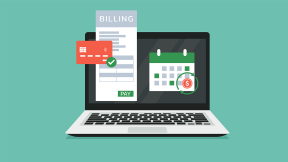680 credit score: A guide to credit scores

Quick insights
- A 680 credit score is considered a “good” credit score by most credit scoring models.
- A good credit score may come with many benefits, including lower annual percentage rates (APRs).
- With consistency, time and patience, you can improve your score to scale to the next tier of credit scores.
Credit scores may seem like just numbers, but there’s a lot more beneath the surface. If you recently checked your score and you’re wondering what the number 680 means for you and your financial decisions, you’re in the right place. Below, we’ll decode the meaning of a 680 score and what you can do with it next.
Understanding your 680 credit score
According to the major scoring models, a good credit score falls in the credit score range of 670 to 739, so a 680 score falls within this range. While a 680 credit score is likely to be viewed favorably by many lenders, it may not qualify you for the best interest rates or terms.
In 2023, the average FICO® credit score in the United States was 715, according to Experian™, one of the three main credit bureaus. Now, just because a 680 score is below the national average, doesn’t mean you’re not “good enough” at credit. A 680 is a good score, but it could limit you from exploring greater financial possibilities.
In certain scenarios, a 680 score could mean you’re just starting out with building your credit history; it could also mean you’ve had some hiccups along your financial path to creditworthiness and need to make a few adjustments (more on this later).
Benefits of a good credit score
Don’t beat yourself up if you feel like your score is below the average. After all, if your credit score is at 680, you’re in a good credit score range, which gives you a leg-up. The benefits of a good credit score include, but are not limited to:
- Access to lower APRs. For example, according to Experian, a 680 is a “prime” score for most auto lenders.
- Better chances for approvals. A good credit score can help you get approved for many credit cards and loans (though not all). You might qualify for cards with cash back offers or other perks. Be sure to check with terms and conditions of your card.
- A positive first impression on employers and landlords. Many employers and landlords run background credit checks to help them determine their decision to approve you for a job or rental. A higher credit score may make it easier to rent a home, qualify for lower insurance premiums and even get a job.
As you can see, a 680 credit score is likely to be viewed favorably by many lenders, but it may not qualify you for the best interest rates or terms or certain premium credit cards.
So, how do you improve it to get the most out of your score?
How to improve a 680 credit score
Raising your credit score from 680 to "very good" (740-799) or "excellent" (800-850) can provide access to better interest rates and more favorable loan terms. Consistent, responsible credit behavior is key to improving a credit score. Some tips to help raise your score include:
- Making payments on time, as payment history is heavily weighed when calculating your score. Even one late payment can set you back on your path to building creditworthiness.
- Not applying for new credit too frequently, as hard inquiries—or credit checks that lenders require when taking out a new line of credit—can hurt your score.
- Keep credit balances low to maintain or reduce your credit utilization (the percentage of your available credit that you're using). Ideally, you want to keep this ratio to about 30% or lower to increase your chances of improving your score.
- Monitoring your credit report regularly and dispute any errors, as these can negatively impact your score. You can use the dispute guide available in Credit Journey® and also monitor your credit with credit and identity monitoring alerts.
- Protecting your sensitive information—such as your Social Security number (SSN) and credit card numbers—and use secure websites when making online purchases. This lowers the chances of someone stealing your information and hurting your credit score as a result.
- Diversifying your credit. If you only ever took out credit cards, for example, consider taking out a personal loan for your next major purchase. Keep in mind that taking out a new line of credit may initially hurt your score, but building a more robust credit mix will help you down the line.
- Consider using the Chase Credit Journey® score improvement tool. Anyone—whether they are a Chase customer or not—can use this free online tool. You can track your progress as well as follow a personalized action plan provided by Experian. This plan lists actionable steps, customized to you based on your credit behavior, that you can take to help improve your score over time.
Improving a credit score takes time, but the benefits of doing so can include potentially lower borrowing costs and better financial opportunities. Note that this process takes time, so you may not see the fruits of your labor right away. Remain diligent, even if you feel a little discouraged at times—you will see improvements in your score if you remain consistent and savvy about your financial choices.
Taking control of your credit
Understanding your credit score is a great first step towards improving your financial understanding and wellness. Now that you have insight into what your 680 score means, you can feel empowered to make decisions that are right for you. Knowing how your credit score impacts your financial opportunities is crucial for effective financial management.
Remember, improving your credit score is both a journey and a destination. It takes time and consistent effort, but the rewards can be well worth it.



